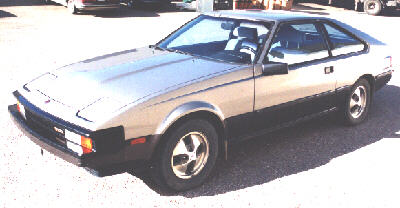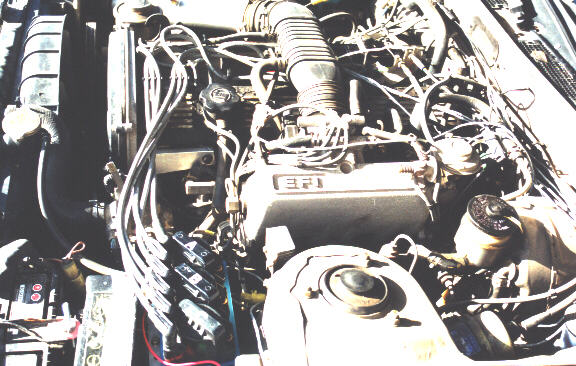
Update 03/15/04
The car now has 91,000 km with SDS fitted and 238,000 km total. The engine is getting pretty tired now and the effects of having a cracked head for the last 6 years has taken it's toll on #5 cylinder. The car is retired now and will be replaced with a '96 BMW 318is for product testing. This has been one of our most reliable and useful shop/testing cars. Hard to beat the sheer size this car will haul- 10 foot aluminum or steel material with the hatch closed. After 22 years of life, it's served it's purpose.
Update 11/04/02
The stock exhaust finally fell off and was replaced with a 2.25 inch system and Dynomax Turbo muffler. The oulet was restricted down from 2.5 inch to 2 inch to keep sound levels reasonable. The system made the engine come alive over 4750 rpm as the stock system was really corking the exit end up. The engine had been detuned via retarded ignition to run on 87 octane fuel. Now with exhaust improvements and full timing restored, output is now close to 175hp at 6000 rpm. Much more fun to drive.
Update 08/14/02
The car has now accumulated over 60,000 miles with SDS fitted, recently upgraded to version 11 software. Mileage is consistently in the 25-27 range city and 33-36 on the highway. Starting and running is excellent day in and out from temperatures ranging from -30C to +35C and altitudes from 3000 to 6500 feet. Other than the bad ground wire connection described on the Tech Page article, there have been no issues with the car or the SDS unit.
Our latest project shop car, an '82 Toyota Supra has been fitted with the prototype direct fire 6F system. The 2.8 liter 12 valve, DOHC 5M-GE is a good test subject with relatively high rev capability. RPM capability has been tested to 7000 successfully and we continue to flog the engine mercilessly on a daily basis.

The L-Jetronic system was removed completely including the vane type airflow meter. Only the stock fuel hardware was left in place. The Hall sensor was mounted on the lower right side of the timing cover and is completely buried once all of the pulleys, belts and rad are back in. The front crank pulley had to be removed with a puller which was quite a chore. A piece of 3 inch steel tubing took the place of the factory airflow meter and also provided a convenient place to install the air temp sensor. The water temp sensor was screwed into the thermostat boss in place of a vacuum switch for the distributor vacuum advance control. The distributor was removed and a ½ inch aluminum blanking plate was mounted to cover the hole. The factory coil was removed to provide space to mount the 3 GM coils. A TPS off of a Subaru EA82 engine took the place of the factory switch type unit. SDS now controls both fuel and ignition.
Baseline acceleration with the L-Jet system and SDS was as follows:
| L-Jet | SDS | |
|---|---|---|
| 0-60 Mph Seconds | 9.0 | 8.5 |
| 3000-6000, 2nd gear | 8.1 | 7.0 |
| 3000-5000, 3rd gear | 10.3 | 9.1 |
| 3000-6000, 3rd gear | 21.0 | 17.2 |
Mid and top end power is noticeably improved. The stock setup signed off at about 4800rpm. With SDS, we now pull hard to about 5500rpm. The engine will pull smoothly from 1000 rpm in 5th gear which is quite impressive. Duty cycle hits 72% which equates to 141 HP roughly which is about 160 corrected at sea level. Stock power is rated at 145 so we found about 15 hp by removing the airflow meter and installing SDS which is confirmed by the acceleration times.
Fuel economy appears to be similar to stock, so far getting about 18- 20mpg in hard city use. On a highway trip, the car got 36 mpg cruising between 70 and 80 mph. This engine is dead stock including catalyst. We are testing closed loop operation extensively on this car as well. Tuning is only in the preliminary stages at this point and ignition timing may not be optimized yet at 33 degrees. Starting is instant and the idle is extremely smooth for those of us used to four cylinders.
Racetech Home Page: www.sdsefi.com